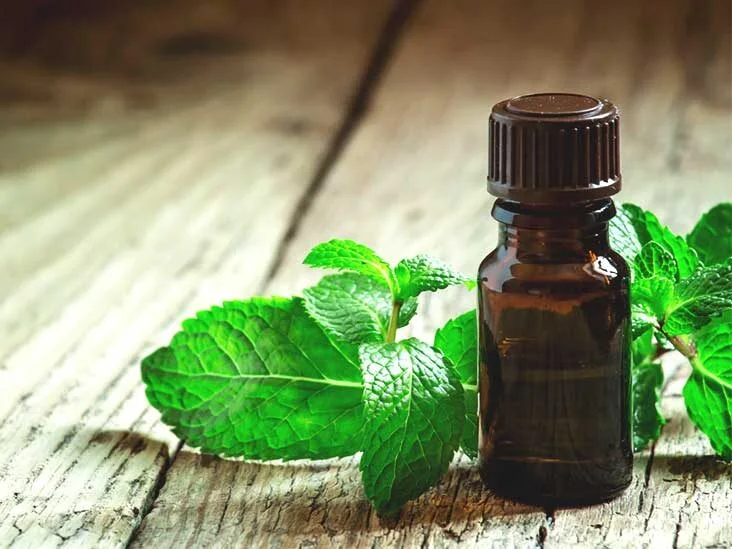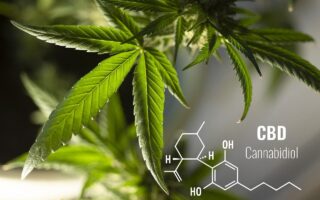Peppermint oil is a multipurpose essential oil that has been used for millennia. With its refreshing aroma and many valuable characteristics, Peppermint oil is used for far more than just adding flavour. In this article, we’ll discuss 15 novel applications of peppermint oil that you might like to try.
Aromatherapy Delight
Table of Contents
The aroma of natural peppermint oil is said to be both invigorating and revitalising. Just a few drops in a diffuser may do wonders for the mood at home or in the office. It has a refreshing aroma that helps improve one’s mood and focus.
Natural Bug Repellent
The strong aroma of peppermint oil effectively drives away insects. Mix a few drops of natural peppermint oil with water in a spray bottle to keep insects at bay while you’re out and about.
Energising Massage
Mix natural peppermint oil with a carrier oil, such as jojoba or coconut oil, can surely be invigorating massage oil. It is perfect for revitalising massages because of its cooling effect on the body.
Hair and Scalp Health
When used with shampoo and conditioner, Peppermint oil truly promotes hair growth and keeps the scalp healthy. The tingling sensation is similar to receiving a massage for the head, and it stimulates hair growth and soothes the scalp.
Concentration Aid
Concentration and focus can be enhanced by inhaling peppermint oil. Put a drop or two on your wrists or temples before focusing on work that requires you to think clearly, providing a refreshing and invigorating mental boost.
Cooling Foot Bath
Soak your tired feet in the tub at the end of the day. To make a refreshing foot soak, combine a few drops of peppermint oil with a bowl of warm water. This simple ritual can provide a cooling and revitalising sensation, relieving fatigue and promoting relaxation.
Sinus Relief
Since peppermint oil contains menthol, it can be used to relieve sinus pressure. If you’re congested, try inhaling the steam from a bowl of hot water flavoured with a few drops of peppermint oil.
Homemade Room Spray
A spray bottle filled with peppermint oil and water makes an excellent DIY natural air freshener. You can use it to give your home a new scent without chemicals.
Headache Relief
Peppermint oil, when diluted, can be massaged into the temples and neck to relieve tension headaches. The soothing effect of the cold can be felt almost immediately.
Digestive Support
People have relied on peppermint oil for generations to help them digest their food. Use carrier oil and a drop of oil to massage your stomach clockwise to relieve gastrointestinal distress.
DIY Lip Balm
Add peppermint oil to your favourite lip balm recipe if you’re looking for a cooling and refreshing lip treatment. Peppermint oil is highly concentrated, so use it with caution.
Mood Booster
Peppermint oil’s refreshing scent can alleviate stress and improve mood. When you need a pick-me-up, open the bottle and smell.
Homemade Cleaning Products
Add peppermint oil to your DIY cleaning solutions to exploit its antibacterial characteristics. It has a clean, pleasant perfume that is perfect for a house.
Nausea Relief
Peppermint oil, inhaled or rubbed onto the wrists, can help those who experience nausea or motion sickness. As a result, it can be a valuable tool while travelling.
Natural Room Scent
Sprinkle a few drops of peppermint oil over potpourri or dried flowers, and you’ll have an instant mood booster.
How Is Natural Peppermint Oil Extracted From The Peppermint Plant?
Steam distillation removes the oil from the peppermint plant, producing pure peppermint oil. By employing this technique, the extraction of essential oil from the plant material ensures the preservation of its aromatic components and therapeutic advantages. The process of extraction encompasses the following steps:
Harvesting
The process commences with the collection of peppermint plants. Oil extraction frequently occurs from various plant parts such as its leaves, stems, and flowering tops. Due to the substantial oil content, plant harvesting generally occurs when it is in full bloom.
Preparation
There is a thorough cleaning of the gathered plant material. Before beginning the extraction process, it is vital to check that the plant material is in good condition.
Steam Distillation
After cleaning the plants, the process involves putting them through steam distillation, with the following steps comprising the process:
- The first step involves placing the plant material in a still or a distillation device.
- The plant matter is heated with steam, which is then released. The aromatic compounds in the plant’s essential oil glands are released due to the steam’s breakdown of the glands.
- The volatile essential oil is carried aloft in the steam vapour, which then rises and is cooled in a coiled tube or condenser.
- Steam is converted back into a liquid by the cooling system; this liquid combines water and essential oil.
- Since essential oil is lighter than water, it rises to the surface of the concentrated liquid. It is subsequently gathered independently.
Separation
Essential oil and water are separated after being collected in a separator device. Oil and water do not combine. Therefore they settle into separate phases.
Collection
The separator’s vital oil layer is skimmed off and saved for later use. The extracted oil is pure peppermint oil, full of the aromatic components responsible for the herb’s signature aroma and therapeutic benefits.
Additional Processing (Optional)
The recovered essential oil could be refined further to eliminate any lingering contaminants. However, natural peppermint oil of good quality frequently needs very slight processing beyond extraction.
The natural peppermint oil extracted from the plant has several potential uses. Some of these include aromatherapy, cosmetics, and food. Note that the oil’s quality can vary based on things like how the plant was grown, how it was distilled, and how carefully it was harvested and extracted.
Final Thoughts
Peppermint oil’s applications go far beyond its flavouring function. This essential oil is multipurpose, with uses ranging from aromatherapy and cosmetics to cleaning and digestive assistance. Peppermint oil should never be undiluted to the skin, and anyone with preexisting medical disorders should talk to their doctor before using it. Experience the many advantages of peppermint oil and learn about its novel uses.



